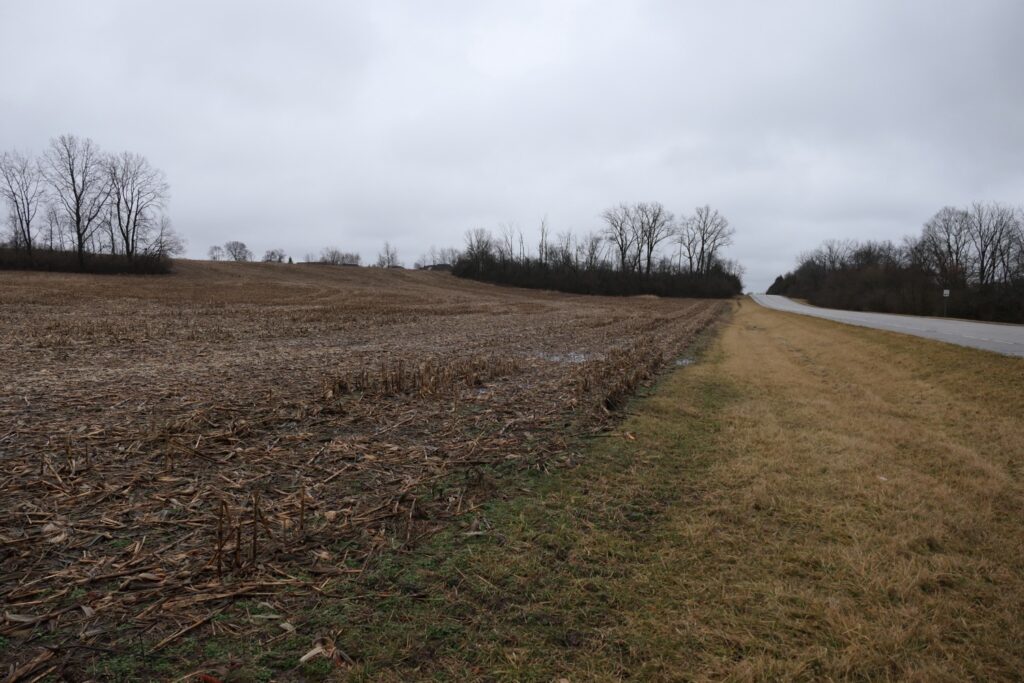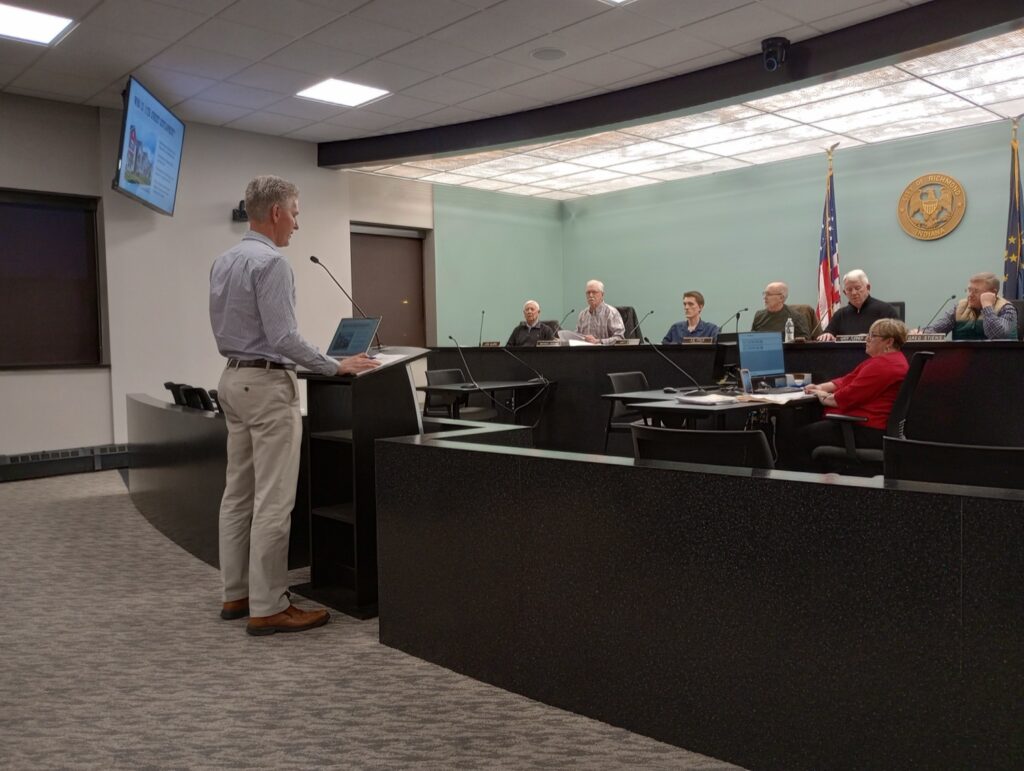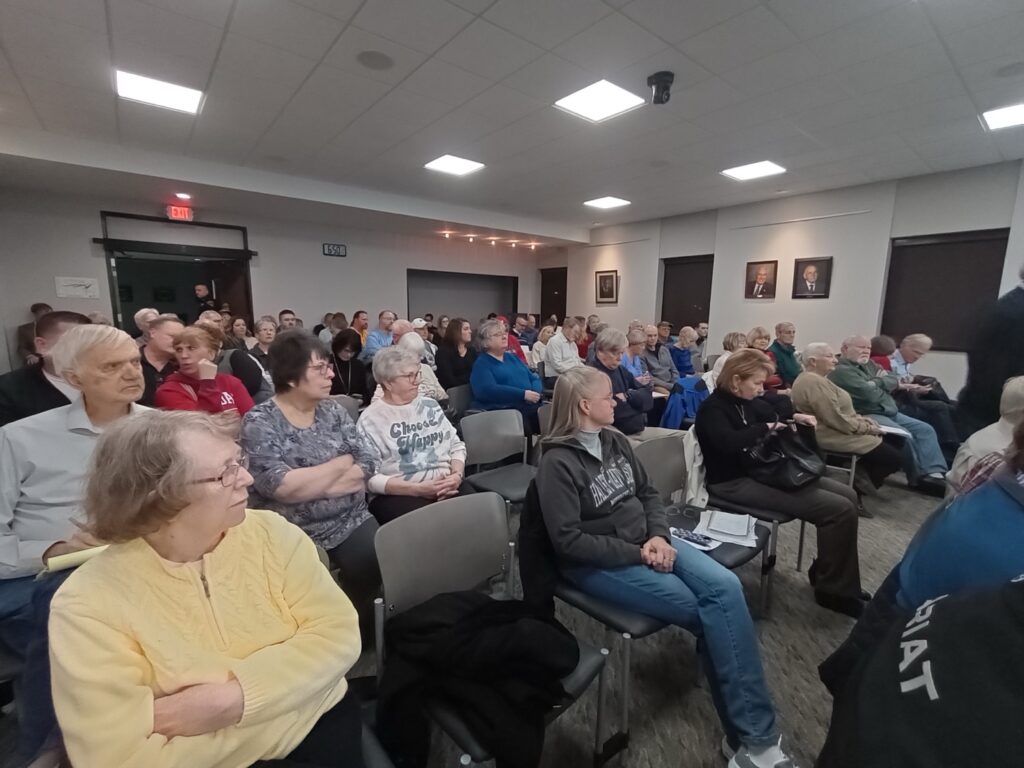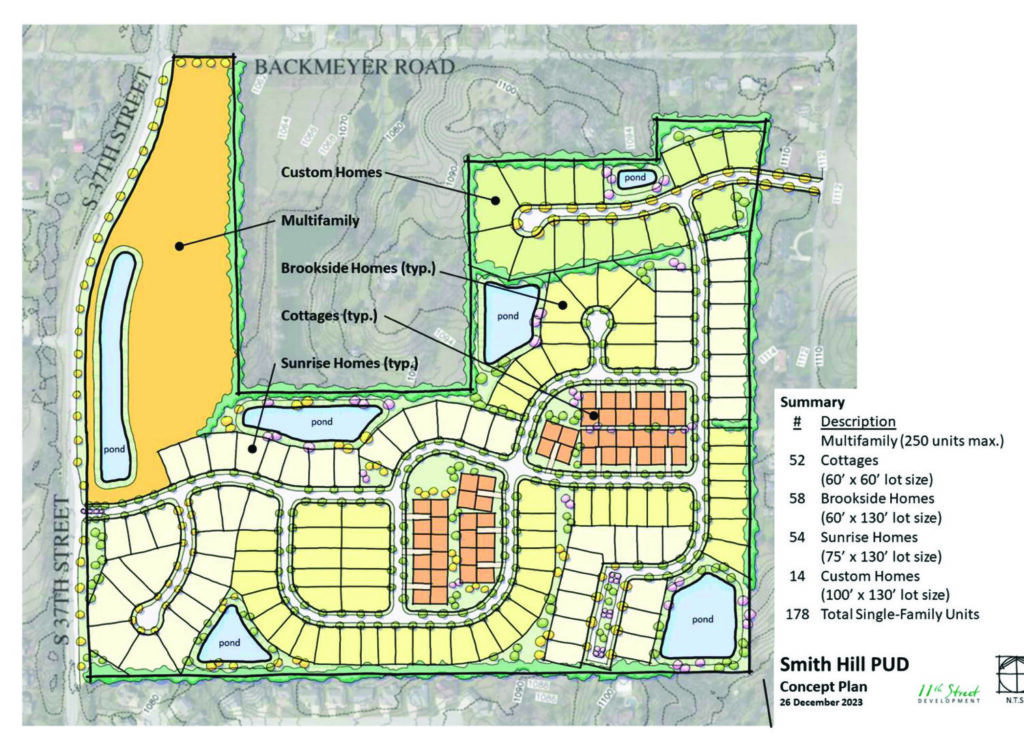Housing debate hits home in Richmond
RICHMOND, Ind. (Western Wayne News) — Caspar Arbeeny was hired by Belden right out of college. He was thrilled to find a good job during the pandemic.
Once he began searching for living arrangements in Richmond, however, he was less thrilled. He detailed the struggle of finding a suitable apartment during the Jan. 24 Richmond Advisory Plan Commission’s public hearing about a proposed Smith Hill mixed residential development stretching from South 37th Street to Garwood Road south of Backmeyer Road.
“(Do) you think if I didn’t graduate in a worldwide pandemic, I would have suffered through that rigmarole?” said Arbeeny, a product development engineer, of his challenging search. “Do you think that if literally anyone else was hiring, I would have come here after that experience? My experience is not atypical.”
Housing woes leading to hiring troubles
The 25-year-old said other young professionals share his unhappiness with Richmond’s apartment options. In fact, housing difficulties pose a hiring obstacle for Belden. That’s why he supported the development plans that include up to 250 apartments with monthly rents ranging from $1,100 to $1,600 and 178 single-family houses in five styles ranging in price from $250,000 to beyond $600,000.
“I can’t even count how many potential hires have turned us down because of a lack of living infrastructure,” Arbeeny said. “This community is in desperate need of apartments. This new development would be a fantastic opportunity to make people like me feel welcome in this town we all love so much.”
Robert Hampton, director of operations for Belden, agreed that housing impacts the company’s ability to hire. He said younger employees struggle with their housing, and some senior-level employees also fail to find suitable local housing. When they commute, their drives extend the workday and lead to retention issues.
“This is the issue that we have at Belden, as well as at other employers in town,” Hampton said.
Reid Health currently has 240 open positions, and Jason Troutwine, a vice president and Reid Foundation president, told WWN that 126 of those require clinical credentials. Housing often is a decision point for trained workers.
Troutwine said that when recruiting, Reid takes potential employees on a city tour, including available housing. When there’s a scarcity of available homes, those prospects might decide against Reid.
Paul Lingle of Coldwell Banker Lingle said that on Jan. 24 only 67 single-family residences were on the market in Wayne County. A review last week of online offerings showed 14 Coldwell Banker Lingle listings and 22 Better Homes & Gardens First Realty Group listings with asking prices exceeding $250,000.

The proposed Smith Hill development provides housing options that might prove attractive to Reid’s prospective employees, Troutwine said. Their skills earn them salaries where they could afford the Smith Hill prices. Troutwine said that of Reid’s 3,200 employees, about 1,450 earn more than $50,000 and 337 earn more than $100,000. As a comparison, the base salaries — after a probationary period — for Richmond police officers and firefighters also exceeds $50,000.
Of Reid’s employees, 1,400 live outside Wayne County, including 571 in Ohio. Craig Kinyon, the president and CEO of Reid, told plan commissioners employees living outside the county creates a retention issue, because they are not part of Richmond’s community and live close to other health care systems where they can work.
“For us and so many employers in the room, one of our best retention strategies is to live here and work here, but we have to have the housing for this strategy to work,” Kinyon said.
Anne Houtman, president of Earlham College, said she feels lucky to have found a forever home in Centerville. Many faculty members and administrators are not as lucky and commute.
“We’re a living and learning community as a liberal arts college, and we have faculty now living in Indy, living in Ohio, driving an hour or more,” Houtman said. “It’s just not good. Liberal arts colleges do better when the faculty are right there.”
Chad Bolser, chancellor of Ivy Tech Community College Richmond, also told the plan commission housing impacts his school’s employee attraction and retention.
How did we get here?
Economic officials and community leaders have been working for years to expand the area’s appeal for employers, workers, families and visitors. At the same time, longtime residents often express the need to persuade more young people to make a life here instead of moving away. Now that we’re experiencing the fruits of efforts to achieve those goals, the community is faced with new questions, both about its readiness for the renewed interest in local living, and about how to balance the restoration of historical residences against the interest in building new ones.
Valerie Shaffer, president of the Economic Development Corporation of Wayne County, shared results from a December housing study conducted by Tracy Cross & Associates. The study indicates Wayne County needs 450 new housing units each year for the next five years. That’s 2,250 units, split among 700 single-family detached residences, 125 townhomes or condominiums for sale, 800 market-rate apartments and 625 lower-income apartments.

“The need for housing has only grown because there’s been no significant movement in the number of new units that have been developed over the last decade,” Shaffer said.
Shaffer said Wayne County currently has about 2,000 job openings with more to come because of Midwest Industrial Park development. Converting some of the 12,181 workers who commute from outside the county into residents and adding new households from demographic changes also would require additional housing stock.
“If just a portion of these individuals move to Wayne County, we’d see a stronger tax base, increased retail, higher school enrollments, improved population health, increased participation and support of our nonprofits, and overall growth in our region that promotes future investment for our city and our county,” Kinyon said.
Mayor Ron Oler spoke favorably about the project. He said increased tax revenue benefits services, such as police and fire departments that account for about 60% of the city’s budget.
“I’m not greedy for taxes; I’m greedy for the services that the citizens of Richmond deserve,” Oler said.
Opponents cite historical lack of growth

Neighbors of the proposed development site don’t see a housing need that requires up to 428 units, especially at the proposed price points. A 232-unit rental development for ages 55 and older has been approved for land farther south on Garwood, and 150 apartments are planned at the former Elder-Beerman site. Downtown building owners are being encouraged to create upper-floor apartments above their retail establishments.
“With the declining population, I have no idea where 650 families are going to come from, particularly with a proposed unit rate of $1,100 to $1,600 per month,” said Larry Parker, a neighbor and the District 4 Common Council representative.
Oler said the resort-style apartments planned for the Elder-Beerman site and the proposed Smith Hill housing are both needed, not just for the numbers but for the variety of options.
“It’s two different clients, in my mind,” Oler said. “The people in these apartments downtown want one kind of lifestyle, which is different from the people who want single-family housing and even the apartments out there. It’s a little different mix than we have downtown, so I think we have a need for both.”
Curtis Whichard, who said his family selected its Garwood Road home to be its forever home for the beautiful night sky and the quiet, also questioned the need for the development.
“I’m not seeing that there’s a need for that much housing that people are going to come from out of town to buy these properties,” said Whichard, who also said he would worry about water runoff impacting his well that has “very, very good clean well water.”
Shelly Culbertson thought that Smith Hill’s minimum $250,000 home price would be beyond people searching for homes.
“I just don’t see that being a feasible option for them,” she said.
Shelly’s husband, Jeff Culbertson, wondered if investment could be made in available lots created when blighted homes are demolished. Smith Hill developer 11th Street Development will design and create the community, then sell finished lots to homebuilders, maintaining approval rights for the homes being built.
“Why are there no studies about taking existing land like blighted land in Richmond where homes have been torn down and rebuild that area within the existing community?” Jeff Culbertson said. “Why is that not happening? Why do they have to take out more farmland and add to traffic concerns when there’s already opportunities there?”
Those speaking against the development also cited crowding, traffic, drainage and water pressure as concerns.

The 178-house neighborhood would have two entrances: one off South 37th Street and one off Garwood Road. Both already are busy roads, and Garwood is a narrow road where neighbors say motorists speed.
“If you come and sit in my front yard on Garwood, you’ll think you’re at the Indianapolis speedway on Carb Day,” said Niki Phenis, whose home would be adjacent to the neighborhood’s Garwood Road entrance.
Gary Wiggans said the city has not provided adequate infrastructure to support the amount of development requested in the southeast-side area.
“You people keep improving all these subdivisions and you don’t do any improvement on your roads and your other infrastructure … ,” he said.
Susan Yaeger expressed concern about sewer and sanitary systems in the area, saying she had a $14,000 backup into her home. She said infrastructure needs should be addressed for current residents before trying to attract new residents, rewarding their commitment to the city.
Parker said he’d been told the Scott drainage ditch along South 37th Street was at capacity and could not handle discharge from the development. The five-parcel site, which is owned by Reid Health through a limited liability company, sits where the Scott Ditch watershed and Quigg Ditch watershed meet, enabling runoff to be directed to both ditches. The preliminary site plan shows six retention ponds that control the rate water is discharged to the ditches.
Wayne County Surveyor Gordon Moore told WWN that the ditches could handle drainage that’s properly done. Should the development move ahead, 11th Street Development would need to file a variety of detailed plans, including for drainage, that require approval prior to construction.
The development came before plan commission because it requires zoning changes from the parcels’ medium-density, single-family residential zoning. The request is to apply zoning districts to each of the unit sizes and styles within the neighborhood, including multifamily residential for the apartments.
Kory George, a neighbor and Wayne County’s chief probation officer, opposes changing the zoning. He pointed out that the apartments could be built directly across Backmeyer Road, where the land is zoned multi-family residential.
“I support the development that’s allowed under the current zoning,” George said. “Zoning protects us, and that’s what I’m here fighting for.”
Next steps
As part of the plan commission process, neighbors are notified about the public hearing and are given an opportunity to respond by email, letter or phone call. The city planning department received 101 responses opposing the development. Plan commission did not take action Jan. 24 so members would have time to read those responses.
Plan commission’s next meeting is 5:30 p.m. Feb. 28. The commission could recommend approval of the zoning request, recommend denial or not make a recommendation. The issue then goes before Richmond Common Council for the final determination. Council is not required to follow a plan commission recommendation.
Troutwine, who lives two blocks from the proposed development, thinks current development opportunities, including the Hoosier Enduring Legacy Program, the state Regional Economic Acceleration and Development Initiative, the Lilly Endowment’s $25 million grant through Earlham, the downtown apartments and improved housing stock provide Richmond an opportunity to “change the trajectory of our town.”
“Each of these projects are part of the whole,” Troutwine said. “Without one, the others aren’t as strong, and we minimize our opportunity to create a vision for Richmond. When this piece doesn’t happen or that piece doesn’t happen, the vision isn’t fully realized.
“I hope that we won’t pass this opportunity up, so we can once again say that our town is a place where our kids want to live, our businesses want to locate and it’s someplace that we talk about our community pride.”
WWN’s Chris Hardie contributed to this article.



